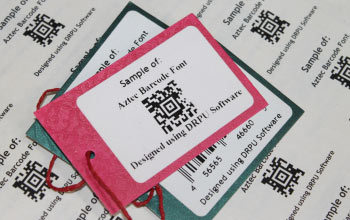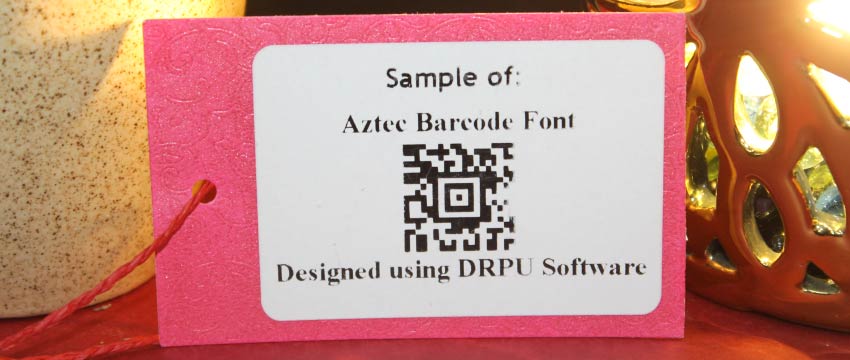The Aztec barcode can encode a variety of data types, including text, numbers, and even images. This makes it ideal for use in applications that require the storage of a large amount of data, such as inventory management, product tracking, and transportation and logistics.
Types Of Devices that Can Read an Aztec Barcode
➽ Aztec barcodes can be read by a variety of devices, including barcode scanners, smartphones, and tablets.
➽ Barcode scanners are handheld devices that use laser or image-based technology to read barcodes. They can be connected to a computer or mobile device via USB, Bluetooth, or Wi-Fi, and can be used to read barcodes on products, packaging, and documents. Some scanners are designed for specific types of barcodes, while others can read multiple barcode types, including Aztec barcodes.
➽ Smartphones and tablets are increasingly being used as barcode scanners, thanks to the availability of barcode scanner apps. These apps use the device's camera to capture an image of the barcode, which is then decoded and displayed on the screen. Some popular barcode scanner apps that can read Aztec barcodes include Barcode Scanner by ZXing Team, Scandit Barcode Scanner, and RedLaser.
➽ In addition to dedicated barcode scanners and smartphone apps, some point-of-sale (POS) systems and kiosks are also capable of reading Aztec barcodes. These systems typically use built-in barcode scanners or cameras, and can be programmed to recognize and decode Aztec barcodes for specific applications, such as ticketing, inventory management, and access control.
International Usage of Aztec barcode
Cost Of Implementing an Aztec Barcode

The cost of implementing an Aztec barcode depends on various factors such as the size of the barcode, the equipment and software required, the volume of barcodes to be produced, and the complexity of the data to be encoded. In this answer, we will discuss the different factors that can affect the cost of implementing an Aztec barcode.
In conclusion, the cost of implementing an Aztec barcode can vary depending on several factors. It is important to carefully consider these factors when planning to implement an Aztec barcode to ensure that the most cost-effective solution is chosen.
Generate the Aztec Barcode
Generating an Aztec barcode involves several steps, including selecting a barcode generator tool, inputting data, and configuring the barcode.You can also use programming languages such as Java or Python to generate Aztec barcodes programmatically.

Download and Install Barcode Software
Here's a detailed explanation of how to generate an Aztec barcode:
There are numerous barcode generator tools available on the internet. You can choose one that suits your needs and preferences. Some popular options include Online Barcode Generator, TEC-IT, and BarcodesInc.
Once you have selected a barcode generator tool, you will need to input the data that you want to encode in the Aztec barcode. This can include any alphanumeric characters, symbols, or other data types that the Aztec barcode supports.
After inputting the data, you can configure the barcode's size, color, and other properties according to your preferences. Barcode tool will provide options for customization. You can save barcodes in various formats such as JPEG, or SVG.
Once you have configured the barcode, you can generate it by clicking on the 'Generate' or 'Create Barcode' button, depending on the barcode generator tool you have selected. You can then print it on any surface, such as paper, card, or plastic.
Advantages Of Using Aztec Barcode System
Aztec barcode has several advantages that make it a popular choice for businesses and organizations. Some of these advantages include:
High Capacity: Aztec barcode can store a large amount of data in a small space. It can encode up to 3,000 characters of text or 1,800 bytes of binary data, making it ideal for applications that require a lot of information to be encoded.
Small Size: Aztec barcode is a two-dimensional barcode that is much smaller than traditional linear barcodes. This makes it ideal for applications where space is limited, such as on small product labels or on identification cards.
Error Correction: Aztec barcode has built-in error correction capabilities that can help ensure that the data is read correctly even if the barcode is damaged or partially obscured.
Security: Aztec barcode can be encrypted to provide an additional layer of security. This can help prevent unauthorized access to sensitive information and ensure that the data remains secure.
Fast Scanning: Aztec barcode can be scanned quickly and accurately, making it ideal for high-speed scanning applications such as those found in warehouses or manufacturing plants.
Flexibility: Aztec barcode can be printed on a variety of surfaces and materials, including paper, plastic, and metal. It can also be printed in a variety of colors, making it ideal for branding and marketing applications.
Readable Direction: Aztec barcode can be read from anydirection, making it ideal for applications where the barcode may be oriented in different ways.
Cost-effective: Aztec barcode is cost-effective and easy to implement, making it an ideal choice for small businesses and organizations.
Support Multiple Languages: Aztec barcode supports multiple languages, making it ideal for applications that require internationalization.
Overall, Aztec barcode is a versatile and powerful barcode technology that offers many advantages over traditional linear barcodes.